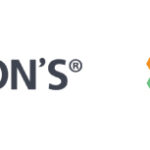Strategies for Agile Change Resistance
When considering introducing agile approaches to your organization, it is important to have strategies that help with agile change resistance. It’s also important to be aware of the 7 Common Pitfalls to Avoid when Adopting Agile Approaches. As a believer in agile methods and someone who has witnessed the benefits, they can bring and the great buzz of an effective agile team. I used to think rolling out the agile method would be a no-brainer. Wrong. Let’s examine challenges and resistance to agile changes. We continue the discussion with common pitfalls 8 through 16.
#8 Underestimating Change Resistance
Achieving successful, lasting change is difficult. Changing processes is even harder because a process is a system designed to resist change. Think about it. If every new type of requirement or defect that came along required a change to our development process, we would be in trouble. Processes are deliberately designed to resist change, which makes throwing them out or morphing them, more difficult than changing, say our time recording system“…a process is a system designed to resist change.”In fact, there are several challenges:
Achieving Lasting Change is Difficult
While people may be willing to try something new, it is a whole other story to get them to switch to it completely. Often, a promising start will revert back to the old way of doing things.
People need to be convinced of the benefits of a new idea before they are willing to invest the effort of having to learn it. Many adults do very little learning. They just want to understand the easiest path through their regular work day and stick to it. Expecting people to think, learn, and adapt to new methods in addition to doing their job is like increasing their workload while keeping their pay the same – not that appealing.
Resistance to Change is Normal and Healthy
We are constantly bombarded with new ideas, goods, and services. It would be anarchy if we just adopted every new thing that came along. We need stability, standardization, and norms to function properly. This natural resistance to change acts as a filtering mechanism to save people from having to think about every new thing. They believe the good stuff will stick, and the bad ideas will fade away. Unfortunately, some organizations are good at marketing poor ideas, and some great ideas miss their mark.
#9: Thinking People Will Want to Adopt Agile Methods Simply Because Agile is “Better.”
We need to plan for resistance and have strategies in place to ensure worthwhile changes occur. Just explaining how agile methods are better will not ensure the whole scale rollout and adoption by an organization.
Different stakeholder groups (executives, sponsors, managers, developers, users, supporting groups) will also have their own interests and concerns. We must sell the relevant strengths and address the likely concerns for each stakeholder group.
Executives and Project Sponsors
Interests: economics, time-to-market, quality, competitive advantage, customer satisfaction
Concerns: risk of failure, unprecedented practices, counter-intuitive planning approaches
Managers
Interests: ability to cater to requirements change, risk mitigation, team morale, management load
Concerns: loss of control, role erosion
Development Team
Interests: effective working practices, meaningful work, work-life balance, less bureaucracy
Concerns: resistance to changes forced upon them by management
User Community
Interests: features, project influence, better quality, visible progress
Concerns: missing features, quality
Supporting Groups
Interests: reassurance of process, clear communication channels, opportunities for intervention
Concerns: apparent lack of control, continual requests for involvement, lack of a visible endpoint.
#10:Thinking the Same Interests and Concerns Apply to All Stakeholders
These stakeholder interests and concerns are a broad generalization. Individuals within each of these groups will have their own interests and concerns as well. A key part of successfully engaging help in a change initiative comes from getting to know individual wants, needs, and concerns and using them to help drive the change.
However, we need to recognize the hot buttons for the various stakeholder groups and learn how to effectively sell to their wants. Equally, we need to listen and acknowledge people’s concerns. Only then will they be willing to try something new.
#11: Assuming People Will Act Rationally
When we lose something, we go through several stages of grief. The same is true for change. Find this hard to believe? Just read the following stages of loss and associated agile interpretations and see if you recognize any of them.
Stage 1: DENIAL
Nice ideas, but they would not apply to my project or how I work.
Stage 2: ANGER
No, I won’t change. You cannot make me use stupid user stories.
Stage 3: BARGAINING
Okay, how about if I have six-month iterations?
Stage 4: DEPRESSION
This is not working, nothing makes sense.
Stage 5: ACCEPTANCE
It was difficult, but I can now see how it helps.
Triggers for Change Resistance
The sense of loss is one powerful reason why people often resist change, but there are many more.
- Sense of loss in security, pride, satisfaction, freedom, responsibility, authority, good working conditions, or status
The change initiative and its implications are misunderstood - Belief that the change does not make sense for the organization
o Change is misdirected, and current state or alternatives are better
o It may create more problems than it is worth
o Our extra efforts are not being rewarded - A low tolerance for change in our lives – perhaps there are already many changes at home
- When change violates a principle or commitment that the organization must stand by – for instance, customer service or quality
- A lack of respect for those initiating the change
- When people are excluded from the change initiative
- Changes viewed as criticism of how things were done in the past – “You are so bad at development, we are going to have to adopt agile methods!”
- The change effort occurs at a bad time, other issues or problems are also being handled – for example, just before a company take over
Levels of Resistance
When people oppose change, their resistance tends to fall into three levels.
Level 1 Resistance – Confusion (Lack of Information)
Level 1 resistance is the least severe and usually caused by confusion and lack of information. We can tackle this by providing information in the form of newsletters, lunch-and-learns, discussion forums, and websites and providing plenty of opportunities for feedback.
Level 2 Resistance – Resistance to Change (Fear of Loss)
Level 2 resistance is more difficult to overcome because it is directed at the change itself and usually stems from a fear of loss of something valued. To tackle this, we must:
• Build strong working relationships with those creating the resistance.
• Embrace the resistance and get them on board as the official skeptic.
• Listen with an open mind and provide acknowledgement.
• Stay calm and engaged and maintain a clear focus.
Level 3 – Entrenched Resistance (Beyond the Changes at Hand)
Level 3 resistance is the hardest to overcome because it’s personal. Entrenched resistance has little to do with the change at hand and more to do with the people behind the change, old personal agendas, or vendettas. Fortunately, level 3 resistance is quite rare, but if you run into it, be prepared for a long struggle. To help overcome it:
• Continually work on building relationships.
• Begin small. Find things you can agree on and work from there.
• Candid conversation is vital. Confront the issues.
• Get people deeply involved in changes that affect them.
• Support yourself and be prepared for setbacks. You will not be able to convert everyone.
#12: Expecting Everyone to Play Nice
This all seems doom and gloom. If people resist change under these circumstances and to these varying degrees, just when do they accept change? Fortunately, there are many circumstances where people are supportive of change, and by knowing them, we can try to ensure they are present and stack the deck in our favor.
Triggers for Change Acceptance
- People will accept changes when the following feelings are present:
- When the change is viewed as a personal gain in: security, money, authority, status or prestige, responsibility, working conditions, achievement.
- Provides a new challenge and reduces boredom – when we create more interesting work.
- Opportunities to influence the change initiative – when we involve people in the changes.
- Timing: the time is right for organizational change.
- Source of the change initiative is liked and respected.
- The approach of the change and how it is implemented appeals to us – when they buy into the approach being taken.
Achieving Successful Change
When we review the circumstances of when people accept change, be aware of internal, intrinsic motivators. There is often a distinct lack of logical, external motivators. Conditions like, “When the change is awesome” are more commonly used over a more logical condition like, “When the change will reduce production costs by 60 percent.” If you use these illogical motivators to introduce agile methods, you will most likely fail.
#13: Missing the Personal Side of the Change Initiative
As a logical, rational person, it pains me to acknowledge it, but we make decisions with our hearts first, then rationalize it with our brains. The same goes for accepting changes. We must first go for the hearts by crafting a caring, inclusive, compassionate change environment, then follow it up with some sensible changes.
“We must first create a caring, inclusive, compassionate change environment, then follow it up with some sensible changes.”
Years ago, cults learned they can be nice to people and actually pay them attention, they will be grateful. Some will even give you money. However, most people later realize they have been had.
I am not suggesting we manipulate people to introduce agile methods. We do, however, need to understand that a key component for change acceptance is the human side of introducing the change. The best changes in the world will meet resistance and take longer to accomplish if they are implemented without regard to the human side of change.
A Roadmap for Effective Organizational Change
We need to consider both strategic and human-related steps and follow a proven route to effective change.
The change road-map shown above uses parallel strategic and human threads to achieve successful change.
- Establish the need– Gain consensus on why a change is needed. Qualify and assess the organization. Analyze and document current problems and shortcomings. Capture previous stakeholder complaints, issue logs, and post-mortem problems. Keep it real, but if there is a burning platform from which we must move forward, document it fairly. Determine the business benefits, and describe where we are now.
- Create a vision– Describe a better state. Outline the goals and objectives we are aiming to create. Unite everyone with a common end goal of what success would look like. Describe where we want to be.
- Form a change coalition– Identify key stakeholders. Get people involved on the initial project and the advisory and review boards. Provide mechanisms for general input and information exchange. Use websites, lunch-and-learns, etc. Be civil, humble, and nice. Do not assume or give the impression the change team has all the answers. Ask people how we should get there.
- Communicate the vision– Provide a clear outline of what is going to happen. People generally need to hear things five times in five different ways to ensure it sticks. Use different formats, analogies, and styles. It is generally impossible to over-communicate a change initiative vision. Plan and promote the organizational changes.
- Encourage employee participation– Make sure people are involved. Schedule follow-up sessions and speak to people about their concerns. Ask for volunteer reviewers and give praise and thanks for reviews, especially if negative. This is the opportunity to turn people around while the resistance is only at Levels one and two. Work on forming good relationships.
- Plan for and create short-term wins– Identify the initial project. Schedule some early, small victories to build momentum, demonstrate progress, and reassure sponsors. People only trust for so long, so give them something to justify their continued support.
- Provide rewards and incentives– Change on top of a regular job is a lot of extra work. Reward contributions as much as organizational norms will allow. If you cannot give bonuses, plan great food for the lunch-and-learns. Give good mementos and freebies or arrange for time off if teams work hard on initial projects. People must see benefits in taking part, otherwise they will not bother. Goodwill, loyalty, and corporate benefits do not cut it with everyone.
- Consolidate improvements– Make sure the successful changes get repeated. Document the successes, and spread the word. Monitor and perform mid-project retrospectives.
- Institutionalize new approaches– Complete and review the initial project. Measure and promote business benefits, and get the sponsors and users to promote the benefits. Identify the next project and broader roll-out plan. Make the changes stick by institutionalizing them. Make them part of the standards and culture, and support other groups trying to repeat the process.
The Satir Change Model
Supporting people as they try new approaches is an important part of effective change initiatives. The Satir change model describes a common cycle people experience as they try something new. Before a change initiative, people feel comfortable and excited to be trying a new approach.
When they start to use new tools and approaches, their comfort level drops. Feeling hesitant and frustrated are normal as people experience the trough of confusion and loss. Unfortunately, it gets worse before it gets better.
The next phase is characterized by turmoil and despair as people ride the emotional roller coaster of new working practices. On some days, things seem to work, but on others it feels like this new approach is destined to fail. You may hear things like, “Our old process may have been broken, but it was a familiar broken, and I knew how to fix it. This new process makes no sense, and nobody knows what to do.” This back and forth can be draining on people, but it does get better.
Eventually people become familiar with the new working practices. Momentum begins to build, and while there may still be a few small set backs, they are minor. Comfort levels rise to points higher than before, and the team runs with the new processes.
“It is not because things are difficult that we do not dare, it is because we do not dare that they are difficult.” –Seneca
#14: Not Explaining that Things Will Feel Uncomfortable at First
This Satir change model is useful because it illustrates this process is a shock to many people. It shows it is normal to feel loss, confusion, or even despair, and it can help people accept the process. They can also look ahead and see this low is not an end, but just a transition point and that things will improve.
#15: Allowing Some People to Charge Ahead and Others to Lag Behind
When rolling out agile approaches, we inevitably have some team members who are keen and want to charge ahead with all kinds of agile practices. We also have others who need more persuasion and mentoring. This gives us a challenge as we must simultaneously rein in the eager folks and push the laggards.
An effective way to manage this challenge is through “change wedges.” Imagine the change initiative is like stewarding people through a curved path (we are trying to change the development direction).
The keen staff are rushing ahead, and the laggards are dragging behind. Trying to manage this diverse group is draining and time consuming. Change wedges limit the amount of change to manage by reducing the change scope.
We can insert a wedge behind the team by stating, “For iteration 1, all requirements will be recorded as user stories.” This will stop the laggards reverting back to their old detailed specifications. At the same time, by stating, “We will not automate the build process until iteration 2,” we can insert a wedge ahead of the keeners and prevent them from charging ahead and spreading the mentoring focus to thin.
Then as we get everyone used to writing stories, we can introduce the next set of changes, which might include the automated build process. Using a managed, gated approach like this, we can ensure people adopt the new processes in order to move along, but also nobody gets so far ahead that they are inventing standards without peer involvement or getting enough mentoring.
#16: Not Creating an In-house Sustainment Team
Finally, we need to make sure the changes persist. There is no point going through all the time and effort of rolling out these changes if the techniques are abandoned in one year.
These are the keys to making changes stick:
- Create an in-house sustainment team– Make it someone’s job to champion, steward, and nurture the new process.
- Facilitate changes through existing staff– External consultants have their place, but engage them to work through existing staff. We do not want the initiative to end when they leave the building. So, make sure the change team has a lasting presence beyond any short term initial projects.
- Employ a continuous improvement model– The process of improving is never finished. Employ a model that promotes and continues improvement. Some, like Toyota’s, require a mindset shift that is likely harder to implement than agile methods, but others, like the IDEAL model, are simple and have plenty of supporting material.
The IDEAL model takes its name from the five steps in the process (Initiating, Diagnosing, Establishing, Acting, Leveraging) and can be used as a how-to guide for in-place groups like development team interest groups or project management offices to continue process improvements after the initial push.
The model is sound from a methodology point of view, but it is sometimes used without enough stakeholder involvement. So, be sure to remember the importance of inviting and engaging everyone in the process if you use this approach. Draw a “return to start” arrow on the Organizational Change Road map model shown earlier and reuse this approach for the next set of improvements to make.
Conclusion
Hopefully these two posts have provided some useful pointers for introducing agile approaches.
As a consultant in a project management role, I only get to help a couple of companies each year adopt agile practices. However, I am pleased to say that despite the mistakes I have made in the past, none of the 40+ companies I have worked with over the last 23 years have switched back to their original approaches after trying agile.
So, take heart, and plan your agile introductions in close collaboration with all the stakeholders that will be impacted. Listen, pay attention to the skeptics, avoid the common pitfalls, and have faith that the good changes will prevail.
More Agile Resources
Listen to my related webinar: Implementing Agile: Part Two of a Two Part Series .
Here is another perspective on agile resistance.
- Today’s Project Manager: 9 Tips For Effective Project Management in 2020 - April 28, 2020
- Agile Risk Management - June 10, 2019
- PMI-ACP® Credential – What you Need to Know for Certification - July 5, 2018






